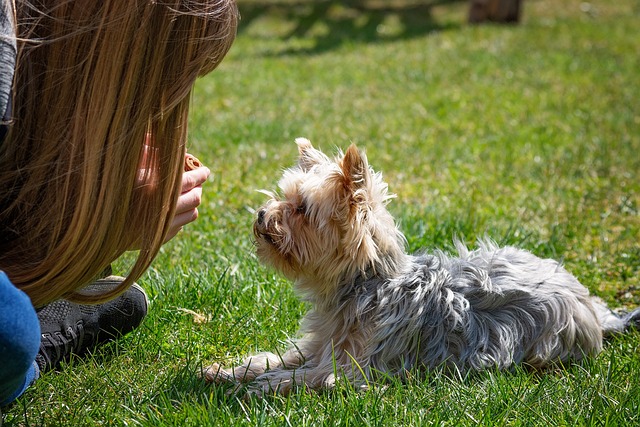
Dogs do not have the same ability to think as humans do, therefore you should not try to treat your dog as an intellectual equal. People who expect dogs to be puzzle masters will soon be disappointed. Dogs are smart animals, though, and with a little patience and understanding they can be well trained.
When doing crate training, train your dog incrementally rather than trying to do it all at once. When they seem comfortable in it with the door open, try shutting the gate and feed them treats through the wires. Gradually increase the amount of time your dog spends in the crate, starting with just a few seconds. If the dog becomes upset, then you need to take a step back and slow down the training.
The best way to train your dog is to reward it when it behaves properly. Quantity and timing are important when it comes to rewards. It can create confusion for dogs if rewards are sporadic and not administered at the correct times.
To house train your pup, get him on a set feeding and potty schedule every day. This gives both you and the dog a heads up as to when they need to go outside, and you can make sure that happens before they make a mess indoors. Having a regular schedule will help your dog know that a potty break will be coming, and he will hold learn to hold his bathroom urges until that time.
Pay attention to how much time you spend training in one session. Dog attention spans only go so far, so make sure not to go on too long. Early on, your training sessions should be limited to less than 10 minutes.
Call for your dog the same way every time. Use his or her name when giving a command. First, call his name then give him a verbal or gesture command. This will get their attention quick and aid your training routine.
Firm, direct commands are the best approach to take when training your dog. Try not to yell though, as negative reinforcement does not work. This is a good way to establish a good relationship with your puppy.
To keep your dog from barking, teach them to obey to a simple order that will make them quiet. The next time your dog barks, let him see a treat and give the order for him to be quiet; repeat this until your dog stops barking. When your dog quits barking, offer him the treat. If you do this a lot of times your dog will know if they are not barking they will get a treat.
To teach a young dog to behave while walking on a leash, start by initiating some good-natured playing. As you play, you can then place the collar on his neck. Making sure your new dog is comfortable with a collar is important, particularly if you want to take them on walks and have some sort of identification tags for them to carry.
One way to help discipline your dog’s bad behavior is to use a water bottle. Your dog will quickly learn that what he is doing is not acceptable. Soon your dog will stop these behaviors and you’ll have a playful yet obedient dog.
Bringing dogs on a trip means bringing all their supplies, too. You need to bring bowls, his leash and bathroom supplies to ensure you can travel comfortably. You can buy dog food when you get there, of course, which is a lot easier than bringing it with you.
Dogs will be dogs, so give your dog outlets to work out his canine behaviors. A good diet and plenty of exercise are crucial to keeping any dog healthy and happy.
Maintain consistency when canine training. Write down the commands that you use and then make sure each person who needs to know them does. Remember to always reward a good behavior and not a bad behavior. If different people are responding differently with the dog, it will make training difficult and confuse the dog.
After learning some helpful hints on how to get through to your dog and train it to behave to your expectations you simply need to follow what you have learned. After changing your dogs behavior to fit with the tips suggested you can properly train your dog.
